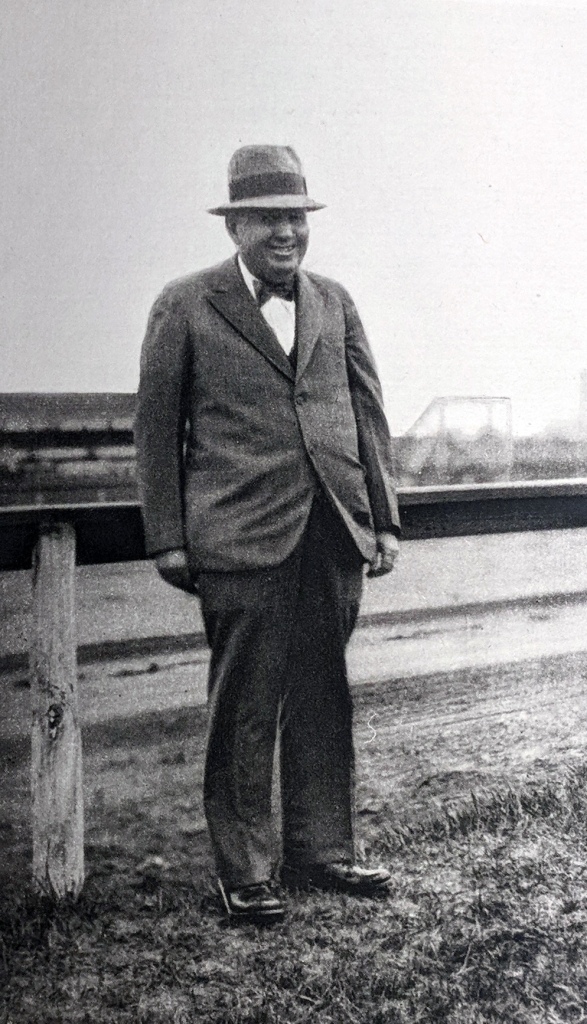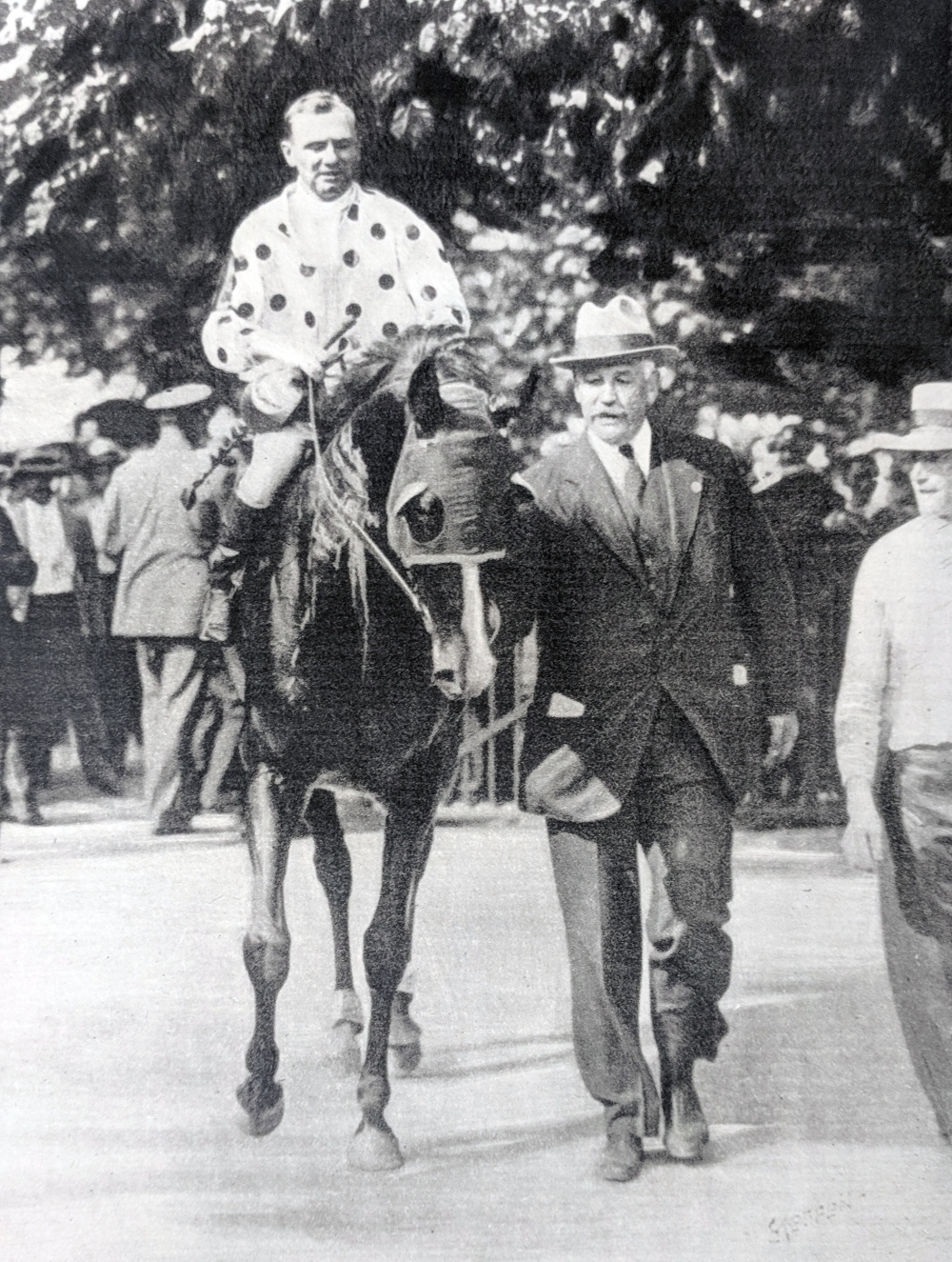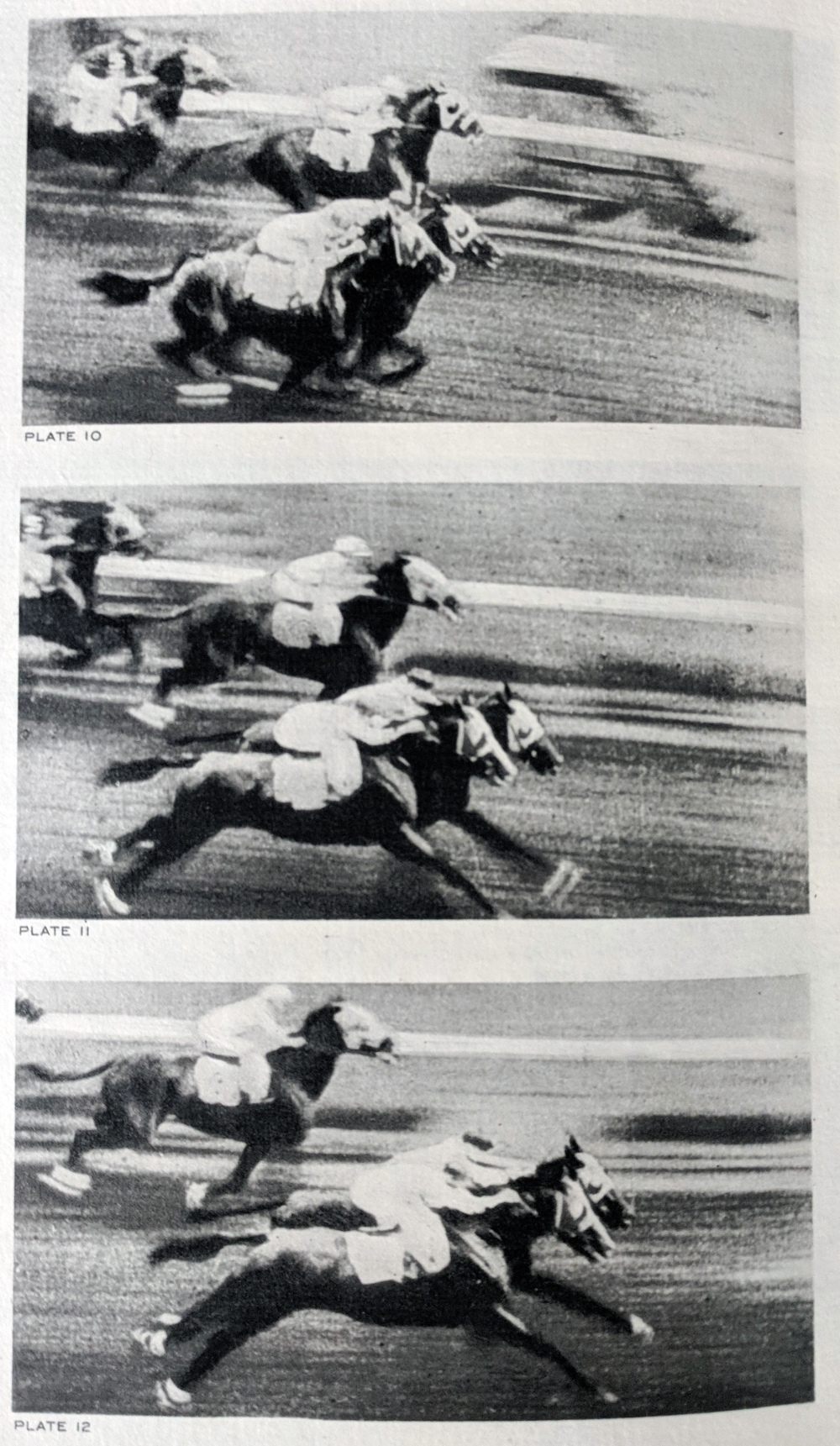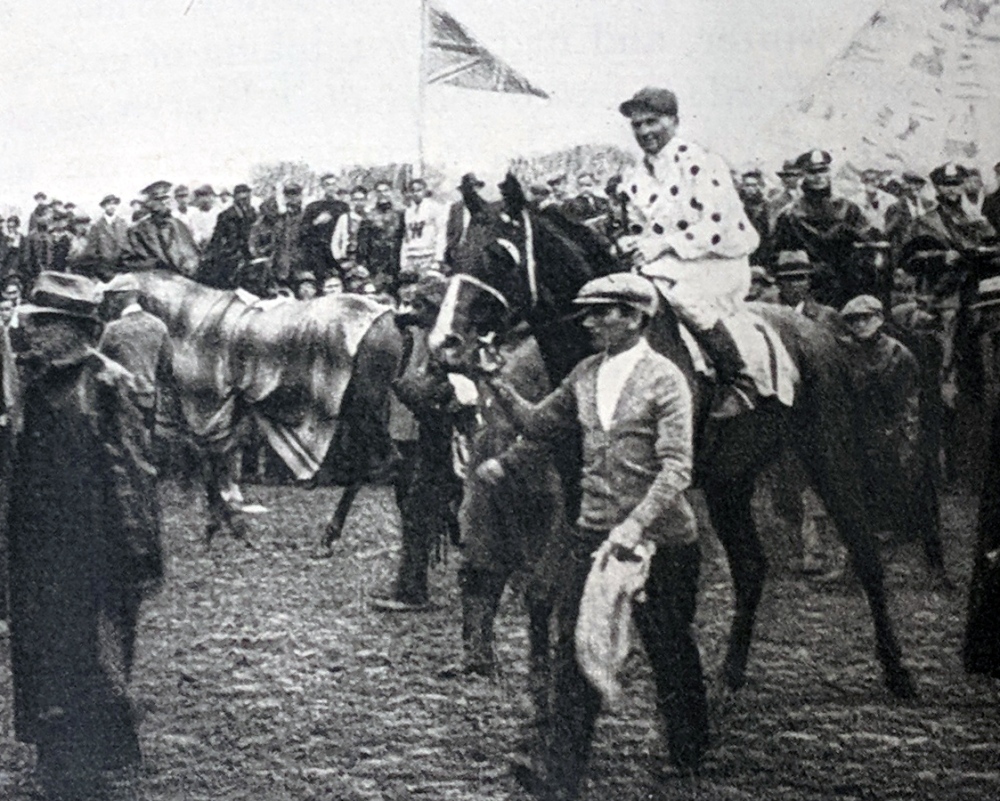One of the most impressive Thoroughbred racers of the 20th Century was Gallant Fox, whose racing career lasted from 1929-1930. Gallant Fox was the second horse ever to win the American Triple Crown, and the term “Triple Crown” for the Derby, the Preakness, and the Belmont was popularized during his 1930 campaign.
“The Fox” was owned by William Woodward Sr.’s Belair Stud in Maryland but was foaled in Kentucky. Following the horse’s retirement from racing, William Woodward wrote a custom-printed memoir to commemorate Gallant Fox’s achievements. The National Sporting Library & Museum is privileged to hold a copy of this book, one of the scarcest volumes in the NSLM collection. It has great value for its memories of the entire racing career of Gallant Fox.

One of Woodward’s memories of “The Fox” was his intelligence and curiosity, even from his earliest days as a colt.
The colt was broken and showed no special signs of anything one way or another, except that he was curious-minded and wanted to know all that was going on, giving every evidence of a high mentality, which however, would be slow to develop.He was a good fast colt as a yearling, with nice action, which was also the case in the beginning of his two-year-old year.
From Gallant Fox: A Memoir, by William Woodward, Sr.,
1930, National Sporting Library & Museum.
The Fox’s curiosity would last throughout his career, and it was the horse’s custom to eye the grandstands before each race. Still, Gallant Fox’s penchant for distraction led to a bad start to his racing career:
We started him in a five furlong race, with Peto as a companion. There was a good horse in the race called Desert Light. It was a small field. Gallant Fox was looking around the country when the tape was sprung and he was left about seven or eight lengths.
From Gallant Fox: A Memoir, by William Woodward, Sr.,
1930, National Sporting Library & Museum.
Despite the bad start, The Fox recovered to finish third, kicking off an auspicious career with an impressive list of prominent wins: the Kentucky Derby, the Belmont Stakes, the Preakness Stakes, the Arlington Classic, the Dwyer Stakes, the Saratoga Cup and the Jockey Club Gold Cup.

The jockey for most of Gallant Fox’s wins was Earl Sande, a South Dakota native who got his start as a “bronco buster” before turning to Thoroughbred horse racing. Sande was most famous for his time on Gallant Fox, and went on to be a successful trainer and racehorse owner. Two days before the 1930 Belmont Stakes, Sande was in an automobile accident, putting his start in jeopardy.
On Thursday night before the Belmont, Sande was riding in an automobile driven by one of his friends, when they had a crash. The car turned over, and as he had been under it and was rather badly cut up, I sat with him on Friday afternoon in the Belmont paddock for quite a while to see whether he was in proper shape to ride such an important race. He was altogether himself and was fortunately unhurt except for scratches and patches. He said that his first thought, when he found himself under the car, was, “How terrible! I won’t be able to ride the horse on Saturday.”
From Gallant Fox: A Memoir, by William Woodward, Sr.,
1930, National Sporting Library & Museum.
Sande, his face bandaged from the episode, rode to victory, making Gallant Fox the second American Triple Crown winner in history.

Later in the year, on a very heavy track, Gallant Fox lost the Travers Stakes in a major upset. Weighed down in the mud, Gallant Fox and rival Whichone dueled throughout the race, before both were overtaken by Jim Dandy, who won handily. Popular sentiment pegged Gallant Fox as weak on a heavy track. Woodward, however, saw the way the race unfolded on position as the primary reason why Gallant Fox was defeated.
To my way of thinking there were two reasons for The Fox’s defeat. First, the star was an unfortunate one for Gallant Fox. Second, he was taken wide the entire way against our will, and intentionally so, as evidenced by Workman’s ride on Questionnaire in the Realization. The Fox was horse enough to race outside of Whichone and beat him but neither he nor Whichone could give away the distance given to Jim Dandy and win.
From Gallant Fox: A Memoir, by William Woodward, Sr.,
1930, National Sporting Library & Museum.

Following the 1930 season, Gallant Fox was retired to stud with 11 wins in 17 races and over $300,000 in earnings.

Beyond racing, Gallant Fox’s enjoyed considerable success at stud. In 1932, Gallant Fox sired Omaha, who would go on to be the third winner of the American Triple Crown in 1935. In 1933, Gallant Fox sired Flares, the second American horse to win the Ascot Gold Cup, a race narrowly lost by Omaha in 1936.


John Connolly has served as the George L. Ohrstrom, Jr. Head Librarian at the National Sporting Library & Museum (NSLM) since early 2014. He is responsible for the care of the Library collections, including books, magazines, photographs, diaries, letters, and much more. The NSLM collections span over 350 years of the history of equestrian sport, as well as fly fishing, wing shooting, and other field sports. Have a question? Contact John by e-mail

Great article.
Thanks John.
LikeLike
I live in Prince Georges County, Maryland. You can visit Belair Mansion and Stable (run by the City of Bowie) and see the stable block where Gallant Fox, Omaha, and Nashua lived when they received their early training. There is even a Gallant Fox Way in Bowie!
LikeLike